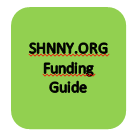Categories: Funding
04.08.2015
Our funding guide, currently featuring 58 programs, is a one-stop resource for anyone seeking funds for supportive housing.

The funding guide is an invaluable resource, given that a typical supportive housing residence receives funding from a variety of city, state, federal and private sources. Keeping tabs on these funding programs -- their guidelines, deadlines and fine print -- can be a time-consuming task.
We hope that our funding guide, a one-stop resource for anyone seeking funds for supportive housing, will facilitate the process for you. Your feedback is welcome.
What you'll find: up-to-date information and analysis on 58 New York supportive housing funding streams. Each profile contains the basic facts and figures for its given program. These include rules on how to apply, details on which populations are eligible and links to term sheets and regulations for more detailed information.
Users can search profiles using the tools in the green side bar on the left-hand side of the page. These filters allow you to search for entries by funding type (capital, operating, etc.) and source (New York City, federal, etc.), among other variables.
Our profiles will be updated regularly to maintain the most current information possible.
Here are a few highlights of current available funding streams: In November of 2014, HDC archived their LAMP program, and created Extremely Low and Low-Income Affordability (ELLA), which builds on LAMP but offers more homeless set aside units and targets deeper affordability. At the same time, HPD archived the LIP program, and created their version of ELLA. HPD's ELLA like HDC's, builds on its predecessor, and also provides deeper targeting for lower income people as well as increased homeless set aside units. HPD also created the Senior Affordable Rental Apartments program (SARA), which provides gap funding for affordable housing for low income seniors above 62 years in age. These new programs are part of the effort to increase the development and preservation of affordable housing to achieve the Mayor's Housing New York Plan. Updated information on Medicaid Redesign Capital Funding, available from NYS OTDA and NYS HCR will help developers preparing for this year’s funding cycle, now that the state budget has been enacted. A new Continuum of Care section updates HUD Homelessness funding with HEARTH regulations and terminology.
